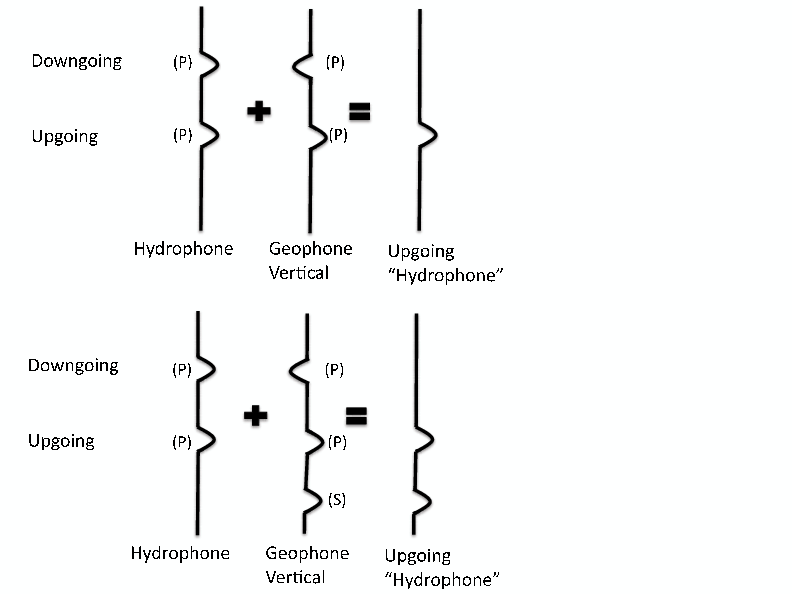|
|
|
|
P/S separation of OBS data by inversion in a homogeneous medium |
Ocean-bottom seismic (OBS) surveys record four-component data: hydrophone pressure data, vertical particle velocity (or acceleration), and two perpendicular horizontal particle velocities. The receivers are located on the sea bed. The source is typically an airgun fired from near the sea surface.
One problem of OBS and of marine streamer acquisition is the inevitable recording of water surface multiples. These multiples are waves which have reflected off the subsurface, and then bounce off the water surface. Though such waves contain subsurface data, attempting to remove them has been part of the traditional processing flow. Unlike marine streamer data, where the receivers record only pressure waves, in OBS acquisition additional energy is recorded. Since the geophones are coupled to the sea bed, they pick up shear waves and other surface waves as well as compressional waves.
A current implementation for processing of OBS data is to regard the hydrophone component and the vertical particle velocity component as containing P-waves only. PZ summation is applied to these components. It is a weighted summation of the hydrophone and the vertical geophone components, designed to determine the vertical propagation direction of the recorded arrivals (Barr and Sanders, 1989). The basic principle of PZ summation is that the hydrophone and the vertical geophone data will have opposite polarity if the energy they recorded was propagating downward. If that energy was propagating upward, they will have the same polarity. This upgoing/downgoing wavefield direction determination method has been used to create separate images from the primary arrivals and the mirror arrivals (the ones reflecting off the sea-surface) at the nodes on the sea bottom (Dash et al., 2009). This method is known as ``mirror imaging''. Separating the imaging process removes artifacts resulting from cross-talk between the upgoing and downgoing wavefields. Additionally, mirror imaging increases the effective aperture of the survey, and provides more information than the upgoing image alone.
Shear waves do not propagate in the water column. Therefore the result of applying PZ summation will be to introduce any non-P energy recorded by the vertical geophone into the summation result. These data will be construed as a P-wave energy recording. When these data are then migrated using acoustic wavefield propagation, they may generate artifacts in the resulting image. A simple graphical demonstration of how PZ-summation can introduce shear wave noise into the summation result can be seen in Figure 1.
|
up-down-sketch
Figure 1. Simplified sketch of PZ summation. Top: For acoustic data, the summation of the hydrophone data and the vertical geophone data will result in the downgoing energy being eliminated, leaving only upgoing pressure data. Bottom: If the data contains shear waves, they will be recorded only by the geophone, and PZ summation will mistakingly add them into a result considered as upgoing pressure data. |

|
|---|---|
|
|
A particular problem of OBS data is ``Vz noise'' (Paffenholz et al., 2006), which may result from surface waves propagating along the water-solid boundary. They can form by shear waves incident on an irregular sea bed topography, or on near surface scatterers. Surface waves can also be generated by upgoing shear-waves incident on a flat sea bed at large angles. Since surface waves appear mainly on the geophone components, they will also contribute to an incorrect PZ summation result if they are not properly removed from the data.
|
|
|
|
P/S separation of OBS data by inversion in a homogeneous medium |